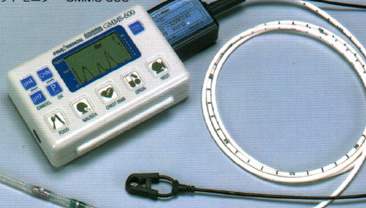
Esophageal Manometry
The Esophagus
The esophagus is a muscular tube that links patient’s throat to stomach. With each swallow, the esophagus muscle contracts and pushes food into the stomach. At the lower end of the esophagus, a valve stays closed except when food or liquid is swallowed or whenever you belch or vomit.
How must a patient get ready for esophageal testing?
A clear stomach enables the very best and safest evaluation, so do not eat or drink anything for six hours prior to the test. Since many medications can impact esophageal pressure and also the natural muscle contractions necessary for swallowing, make sure to discuss with doctor each medication a patient is taking. Patient’s doctor may ask that he or she for the short term stop taking a number of medicines before test.
What is esophageal testing, also called manometry, why is it performed?
Esophageal testing or manometry measures the pressures and also the pattern of muscle contractions inside patient’s esophagus. Abnormalities within the contractions and toughness of the muscle or perhaps in the sphincter at the lower end of the esophagus can result in pain, heartburn, and/or difficulty swallowing. Esophageal manometry is used to diagnose the conditions that may cause these symptoms.
Does a patient know the possible risks associated with esophageal manometry?
Just like any surgical procedure, there are certain risks. While serious side effects of the procedure are incredibly rare, its possible patient could encounter irregular heartbeats, aspiration (when contents of the stomach flow back into the esophagus and therefore are breathed into the lung), or perforation. During insertion, the tube may be misdirected into the windpipe before being repositioned. Precautions are taken to prevent such risks, and patient’s physician believes the potential risks are outweighed through the benefits of this test.
What can a patient expect throughout the test?
A healthcare professional will use a cream to numb the interior of patient’s nostrils. Then a thin, flexible, lubricated tube will be passed through patient’s nose and advanced into stomach as patient swallow sips of water. Mild, brief gagging may take place as the tube is passed with the throat. When the tube is within position, patient will be sitting upright or lying on his/her back as the tube is attached to some type of computer. When the test begins it is important to breathe slowly and smoothly, remain as peaceful as patient possibly can and avoid swallowing unless directed to do so. Since the tube is slowly brought out of patient’s esophagus, the pc measures and records the pressures around patient’s esophagus. Throughout the test, patient may encounter some soreness inside nose and/or throat. The test will take approximately 30 minutes to accomplish and also the results will be sent to his/her doctor’s office.
So what can a patient expect after the test?
Following the test, patient might experience gentle sore throat, stuffy nose, or a minor nosebleed; all typically strengthen within hours. Unless patient’s physician has given him/her other instructions, he or she may continue normal meals, exercises, and any interrupted medicines.
What will be if the tube can’t be passed through the nose?
In certain situations, correct keeping the tube may require passage with the mouth or passing the tube using endoscopy. Patient’s personal doctor will determine the best approach.






